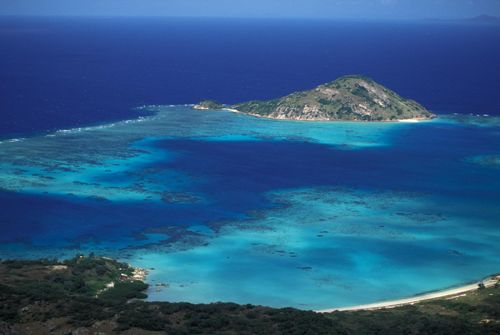by Larry
December, 2018Salutary SeagrassAustralian environmental scientists are celebrating a new discovery, a vast Switzerland-sized (or twice the size of New Jersey) swath of deep-water seagrass efficiently removing and storing CO2 amid the Great Barrier Reef. This is the world's largest yet meadow of deep-water seagrass. Only recently have the deep-water varieties of seagrasses been found to have immense carbon dioxide removal and storage capacities. Shallow water seagrasses were known for their blue carbon sink qualities. Blue carbon sinks are remarkable for not merely extracting carbon dioxide, a major cause of global warming, but also for removing it in such a way that it will remain unavailable for harming oceans or the atmosphere. In the case of seagrass, these are simply flowering grasses that live underwater. They grow in immense meadows at the borders between the land and the ocean, suck CO2 out of the atmosphere four times faster than trees, and sequester it in the root systems, doing so ten times more efficiently than terrestrial forests can store the gas. While the discovery is certainly positive, there is a lot of bad news too. Much bleaching of coral reefs has been occurring. Both in 2016 and 2017 large portions of the Great Barrier Reef succumbed to this type destruction. The deep-water seagrass meadows are thought, however, to help support remaining Great Barrier Reef corals. In addition, they enhance the area's biodiversity and are a buffer, helping to reduce the harm done to coral reefs by storms or ocean acidification. Unfortunately, shallow-water seagrasses and mangrove forests, other amazingly effective blue carbon sinks, are generally in decline due to development, pollution, and storm damage to coastal areas.
Ordinarily, a plant may store carbon dioxide in its leaves, stem, or roots, but once the plant dies this carbon is released back into the atmosphere, for very little net reduction of the greenhouse effect gases behind global warming. However, with seagrasses as well as other blue carbon sink vegetation, like mangrove forests or salt marshes, much of the removed carbon dioxide remains sequestered, for the dying plant material is caught in the intricate root systems and so remains buried. Furthermore, saltwater tends to prevent the buildup of large quantities of bacteria that, on a terrestrial forest floor, by contrast, would breakdown the dead plant material and release the carbon dioxide back into the atmosphere. So here both the root systems and the high salinity of the aquatic environment prevent that. If we can get to the point that we are sustaining our seagrass meadows rather than causing their net destruction, and by the same token salt marshes and mangrove forests, then we could enhance carbon sequestering around the globe by planting and nurturing more of these excellent blue carbon sink environments. We obviously have a long way to go before that. Still, it is one potential means of addressing the current dilemma of too much CO2 in our atmosphere. Even without aid from people, there are now thought to be several billion tons of carbon dioxide being sequestered worldwide by seagrasses, and the figure points to a more optimistic outlook for the prospect of holding off the most dire effects of global warming. Offsetting that upbeat assessment is the reality that on average 1-2% of our planet's seagrasses are being killed each year as a result of human activity. A solution must be based on better behavior by people. Harmful run-off, sediments that cover seagrass meadows, chemical pollution that kills these vital plants, and even development into areas that had been available for marine plant growth cannot continue at their current pace, or we shall lose this battle. If in 20-30 years there is, for example, at least a third less seagrass as currently is sequestering CO2, clearly that is not a trend that augers well for bringing global warming under control. |
